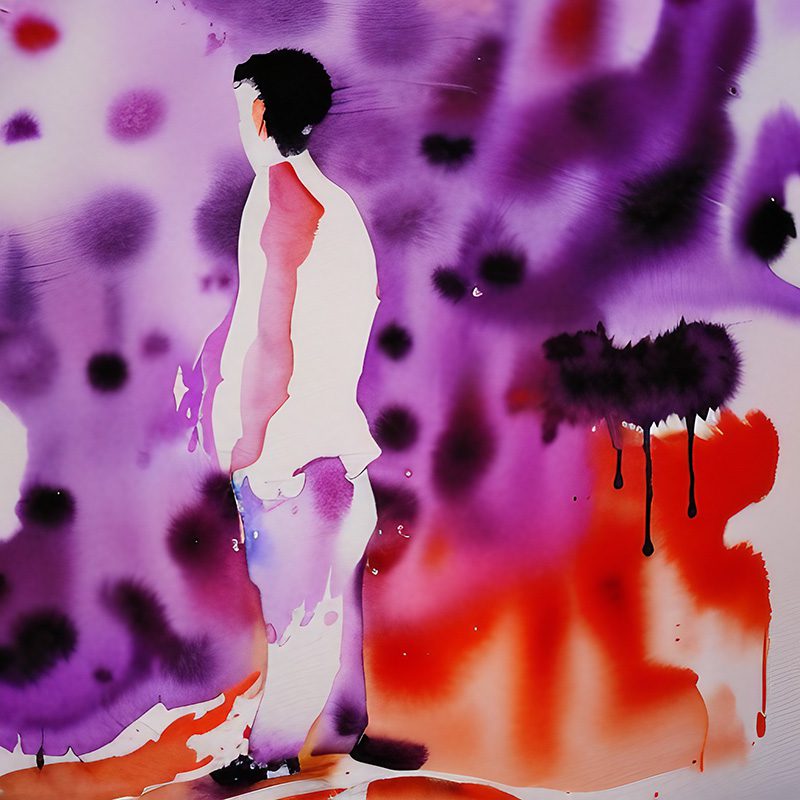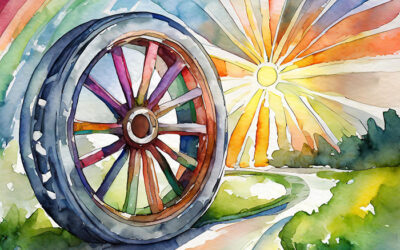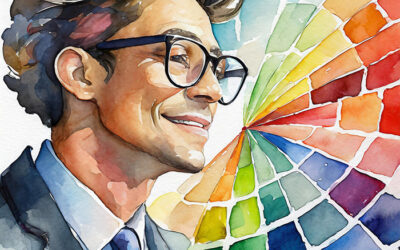Color is an essential part of branding and marketing. It can evoke certain emotions in consumers and help create a specific mood or feeling for a brand or product. This blog post discusses the psychology of color and how it can be used to your advantage in branding and marketing. We will also look at a few case studies of big brands that have been successful at using color in their brand. Finally, we will take a look at color trends for 2023!
The Psychology of Color and How It Affects Consumers.
The psychology of color is a fascinating topic in the world of branding and marketing. Colors can evoke different emotions and associations, which can have a powerful impact on consumer behavior.
Color is one of the most important aspects of visual aesthetics and has been shown to play a significant role in shaping our emotions and feelings. When it comes to branding, colors are used to create a personality for the brand that speaks to its target audience. For example, blue is often associated with trustworthiness and reliability. This makes it a popular choice for financial institutions such as banks or insurance companies. Red is often associated with excitement, passion, and urgency. Making it a practical choice for brands that want to create a sense of urgency or encourage action.
Colors also have cultural meanings that vary across different societies. For example, white is associated with purity and innocence in Western cultures. But represents mourning or sadness in some Asian cultures. This makes it essential for brands to consider their target audience’s cultural background when choosing colors for their branding strategy.
Color can significantly impact consumer behavior. For example, studies have found that people are more likely to remember brands with distinctive colors than those without them. Additionally, consumers associate certain qualities with specific colors; green is often associated with health or eco-friendliness, while yellow is linked to optimism or happiness.
The use of color can also influence purchasing decisions by creating an emotional connection between the customer and the brand. By using colors that evoke positive emotions such as happiness or excitement, brands can create a sense of familiarity and trust with their customers.
How To Use Color in Your Branding and Marketing
Color is a critical component of branding and marketing. It’s one of the essential elements that businesses must consider when creating a brand identity that resonates with their target audience. Let’s discuss how you can use color to create a strong brand identity and connect with your customers effectively.
Choose Colors That Align with Your Brand Personality.
The first step in using color for branding and marketing is identifying your brand personality. Are you a fun and playful brand or a serious and professional one? Once you have identified your brand personality, choose colors that align with it. For example, if you’re a fun and playful brand, bright and bold colors like red or orange might be more suitable than muted tones like grey or beige.
Create Contrast
Contrast is an essential element in a design, especially when it comes to branding and marketing. Using contrasting colors can help make your brand stand out from the competition while making it easier for customers to remember.
Consider Cultural Influences
Colors can have different meanings across different cultures, so it’s important to consider cultural influences when choosing colors for your branding strategy. Remember our earlier example–white is associated with purity in Western cultures but represents mourning in some Asian cultures.
Use Color Consistently
Consistency is key when it comes to branding and marketing, so make sure you use color consistently across all channels – from your logo to your website to your social media profiles.
Test Different Combinations
Testing different color combinations before settling on one for your brand identity is essential. Conduct A/B testing on various platforms, such as social media ads or email campaigns, to see which color combinations perform best.
Be Aware of Trends
While staying true to your brand personality is crucial, being aware of current color trends can help you stay relevant in the market. Keep an eye on industry trends and adjust your branding strategy accordingly.
Case Studies of Brands That Have Used Color Successfully.
Many brands have successfully used color to create a unique identity and connect with their target audience. Here are three case studies of brands that have used color successfully:
1. Coca-Cola
Coca-Cola is one of the most recognizable brands globally, and its use of red in its branding has played a significant role in its success. The company’s use of red dates back to the early 1900s when it was first introduced to stand out from competitors. Red is associated with energy, excitement, and passion, which aligns well with Coca-Cola’s brand values.
2. McDonald’s
McDonald’s is another brand that has successfully used color in its branding. The company’s use of yellow and red in its logo and restaurant design has helped it become one of the most recognizable brands globally. Yellow represents happiness and optimism, while red represents energy and excitement – values that align with McDonald’s brand.
3. Apple
Apple is known for its sleek design and minimalist approach to branding, including white in its products’ design and packaging. White represents simplicity, purity, and sophistication – all values that align with Apple’s brand identity.
These are just a few examples of how brands have successfully used color in their branding strategies. Companies can create a unique identity that resonates with their target audience by understanding the psychology behind colors.
2023 Color Trends: A Bright and Bold Year Ahead
As we get deeper into 2023, it’s time to look at the color trends dominating the design and fashion world. This year, we can see a lot of bright and bold colors that will add energy and excitement to any brand.
One of the most highly anticipated color trends for 2023 is Pantone’s Color of the Year, Viva Magenta. This vibrant crimson hue perfectly balances warm and cool undertones, making it a versatile choice for any design scheme. Whether used as an accent or as the main color in a room, Viva Magenta is sure to make a statement
But Pantone isn’t the only one predicting bold colors for 2023. From deep blues to muted greens, plenty of other hues are set to take center stage this year. Here are some of the top color trends you can expect to see:
Sapphire Blue
This rich shade of blue is both calming and invigorating at the same time. It pairs well with other jewel tones like emerald green and amethyst purple.
Mustard Yellow
This warm yellow hue adds a touch of sunshine to any space. It works well with earthy neutrals like beige and taupe.
Powder Blue
This soft blue shade has a calming effect on any room. It pairs well with other pastels like lavender and pink.
Cool Lavender
This muted purple hue adds a touch of sophistication to any space. It pairs well with other cool tones like gray and blue.
Raspberry Blush
This fiery red-orange hue is Benjamin Moore’s Color of the Year for 2023. It adds energy and excitement to any design.
Green
Green is always in style, but we expect to see more muted shades like olive and sage this year.
Warm Yellow
This sunny shade adds warmth and cheerfulness to any space. It pairs well with other warm tones like orange and red.
In conclusion:
In conclusion, color is crucial to branding and marketing. By understanding the emotional responses that colors can evoke in consumers, brands can strategically use color to create a specific mood or feeling for their products or services. Through case studies and tips, we’ve seen how brands effectively use color in branding and marketing strategies. As we look deeper into the year, we can expect to see bold and bright colors dominating the design world. By staying up-to-date on color trends and using them wisely, businesses can continue to connect successfully with their target audiences through effective branding and marketing efforts.
Sources:
https://www.bhg.com/decorating/color/paint/color-of-the-year-2023/
https://www.veranda.com/decorating-ideas/color-ideas/g41769920/color-trends-2023/
https://www.housebeautiful.com/design-inspiration/g42004612/color-trends-2023/
https://99designs.com/blog/logo-branding/the-hidden-meanings-behind-50-world-famous-logos/
https://www.colorpsychology.org/color-psychology-marketing/
https://www.creativebloq.com/branding/colour-theory-12345670





0 Comments